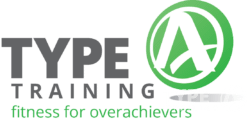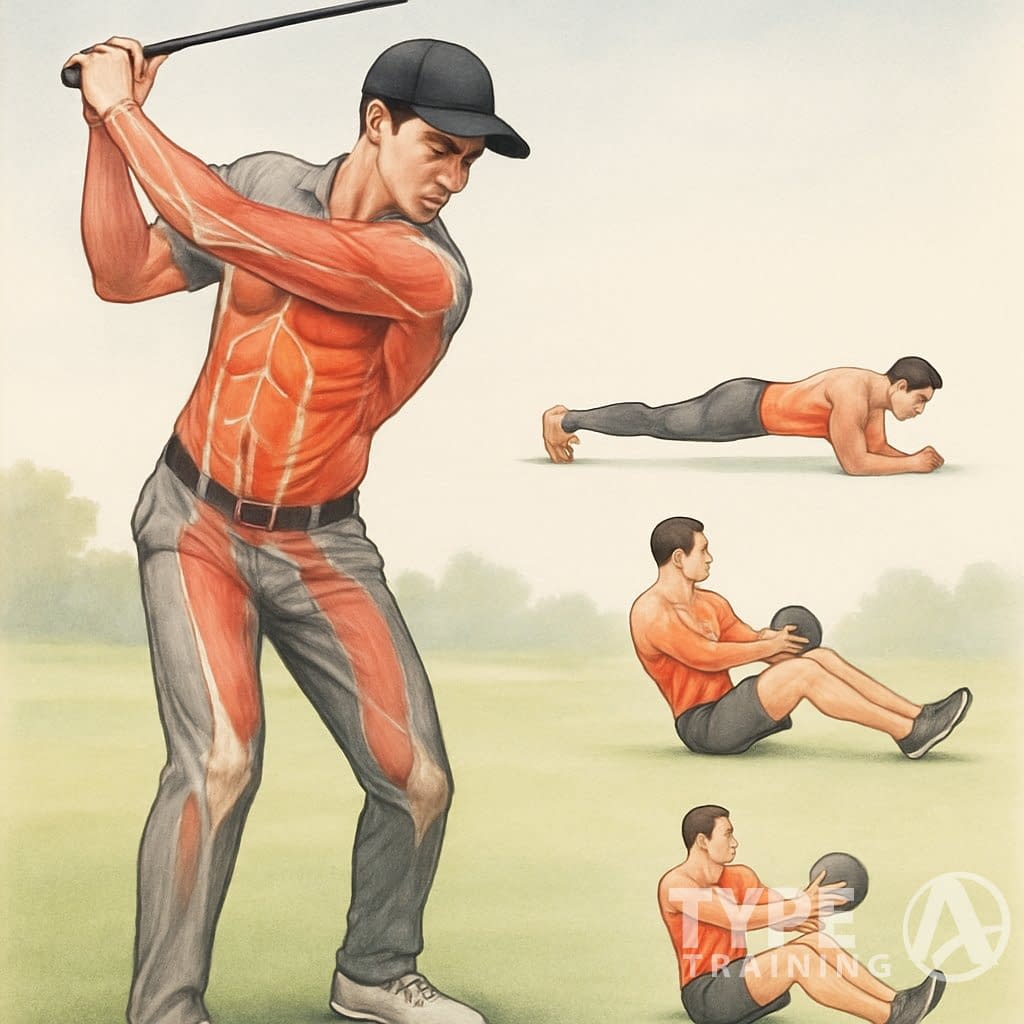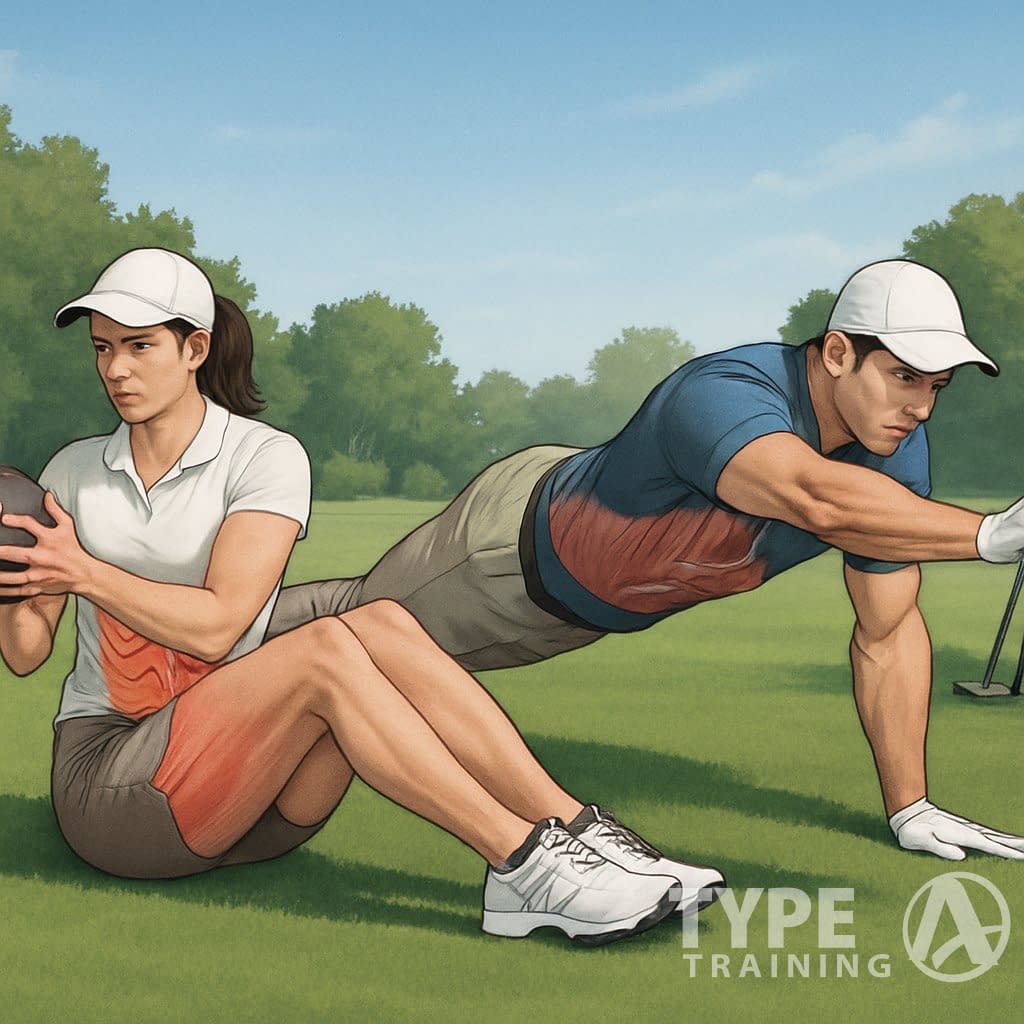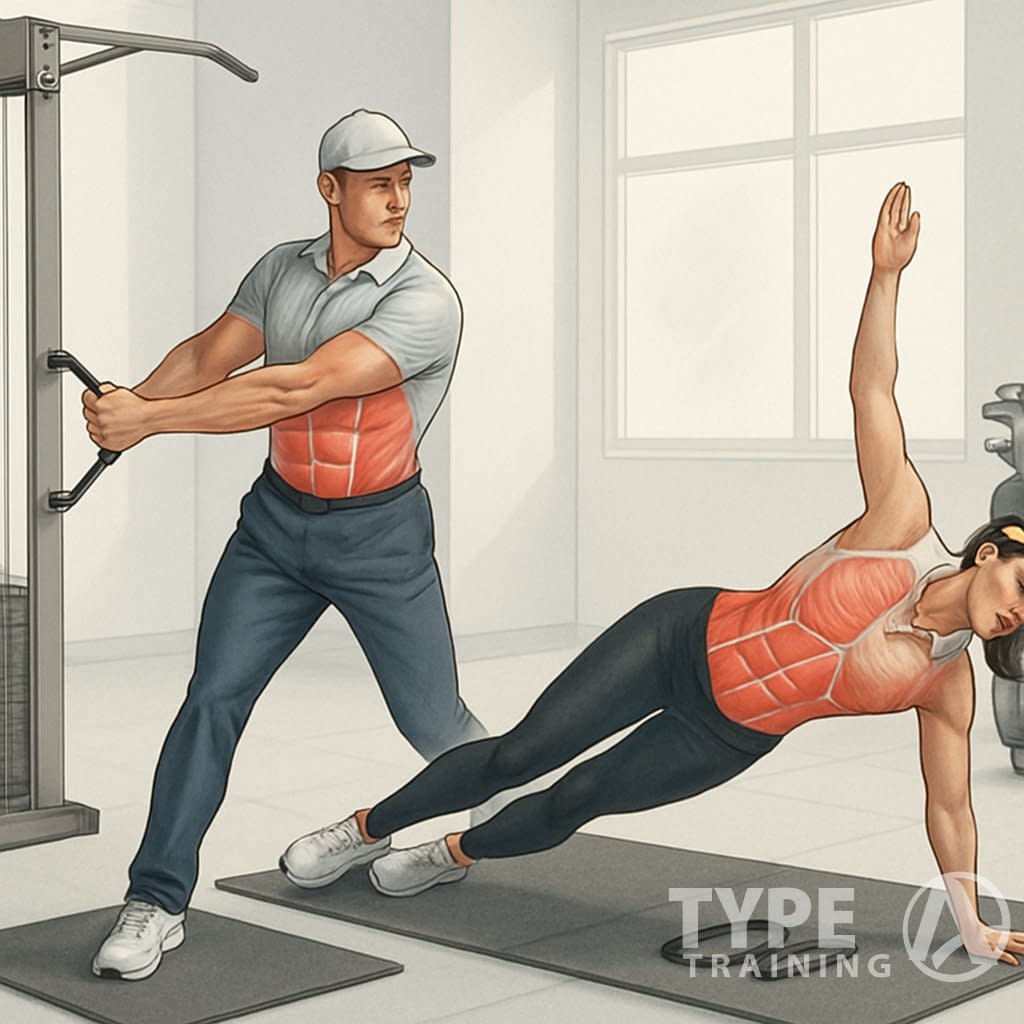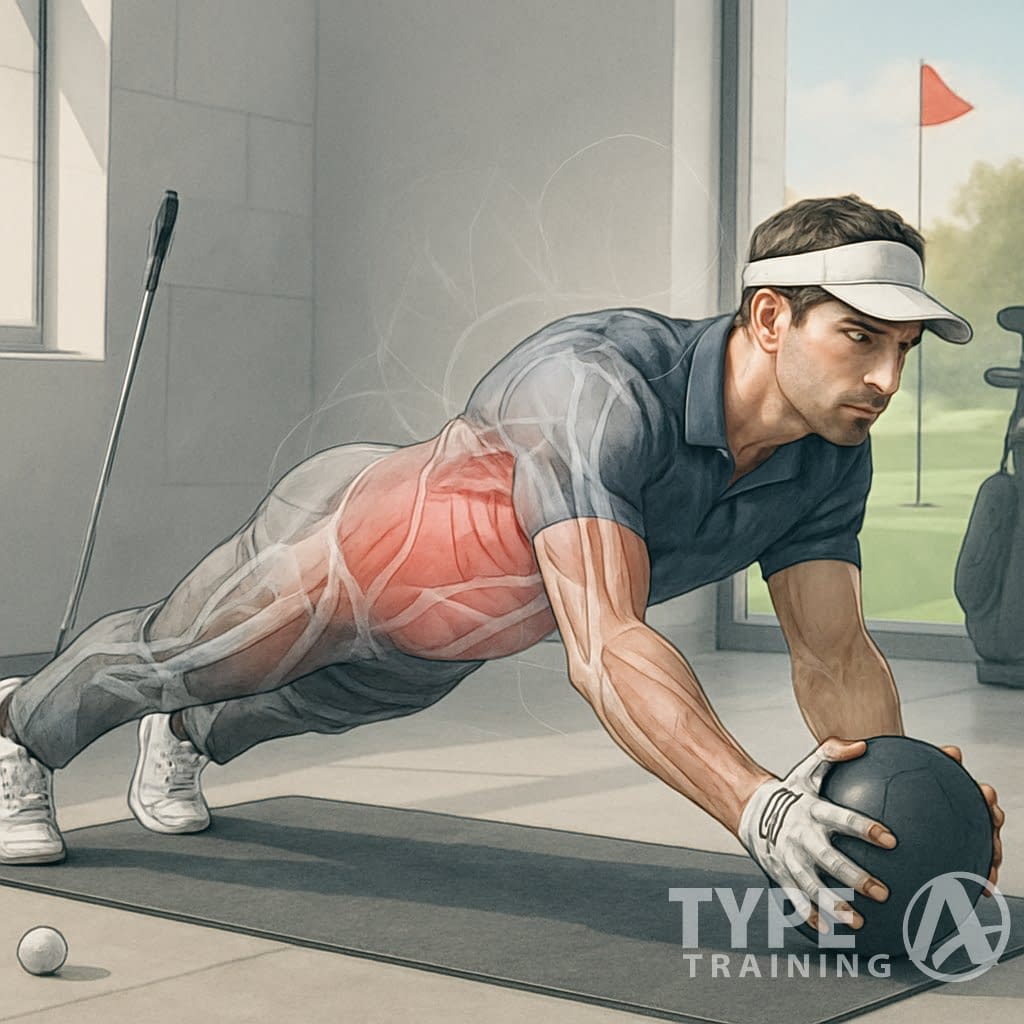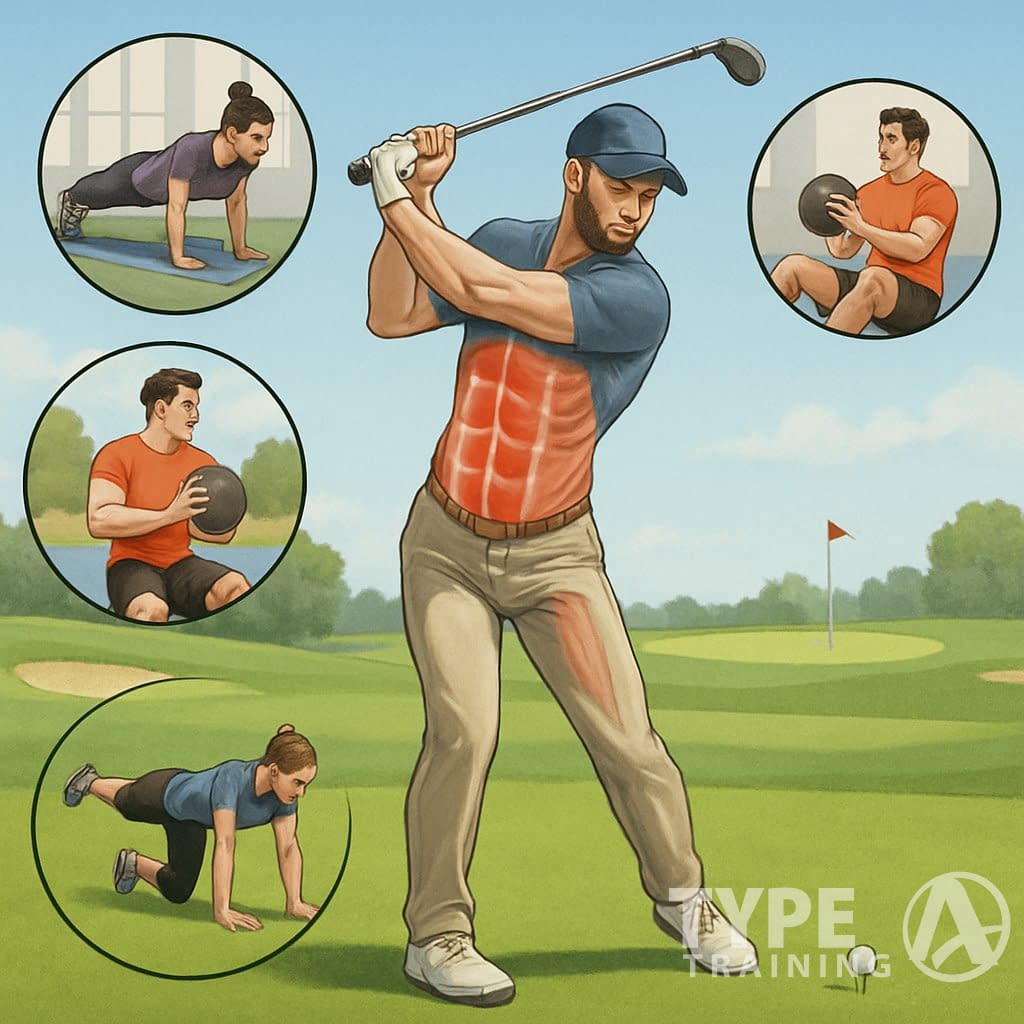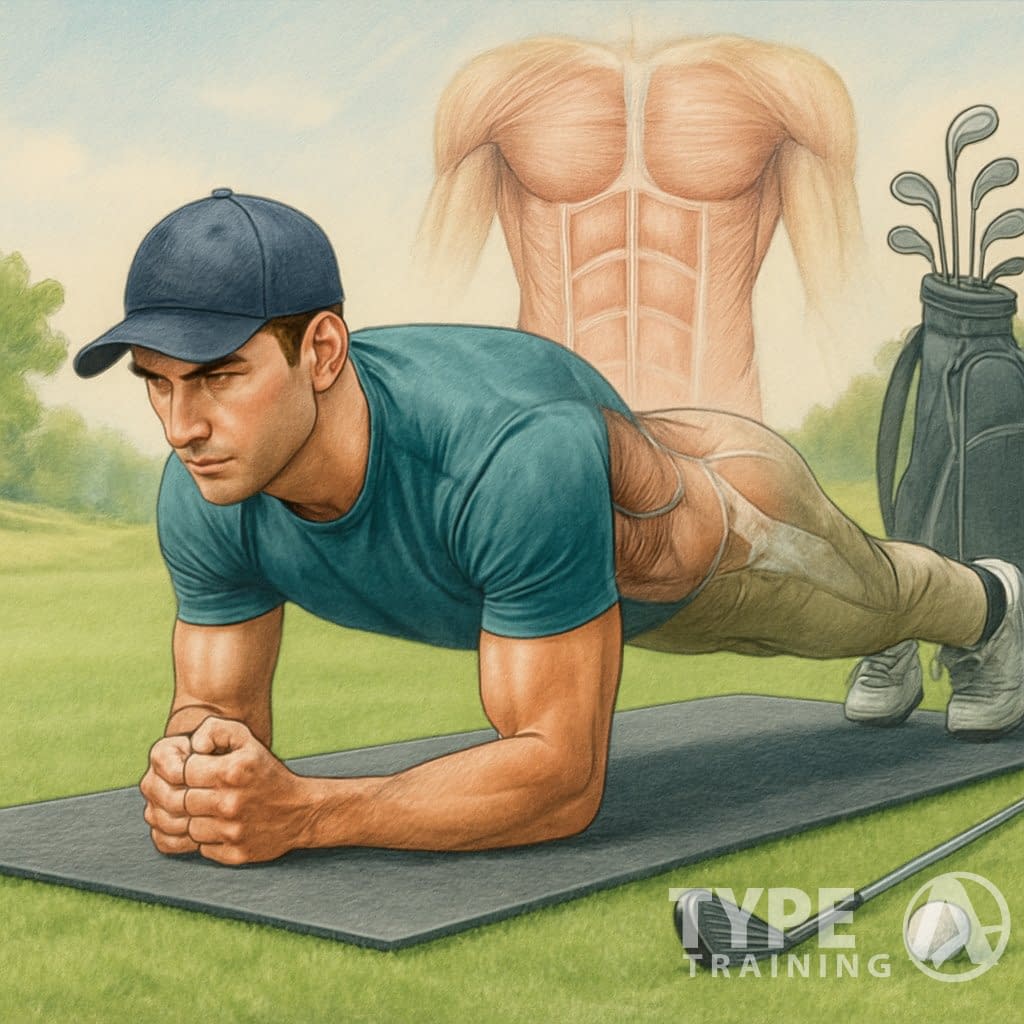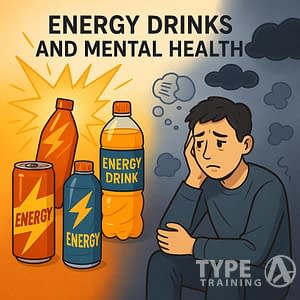A strong core is the foundation of every powerful golf swing. When you watch professional golfers, you’re seeing the results of dedicated core exercises for golfers training that lets them generate impressive clubhead speed and stay balanced throughout their swing.
Building core strength isn’t just about getting more distance—it’s about creating stability, preventing injuries, and improving your overall golf performance.
Incorporating core exercises for golfers into your routine is essential for maximizing your performance on the course.
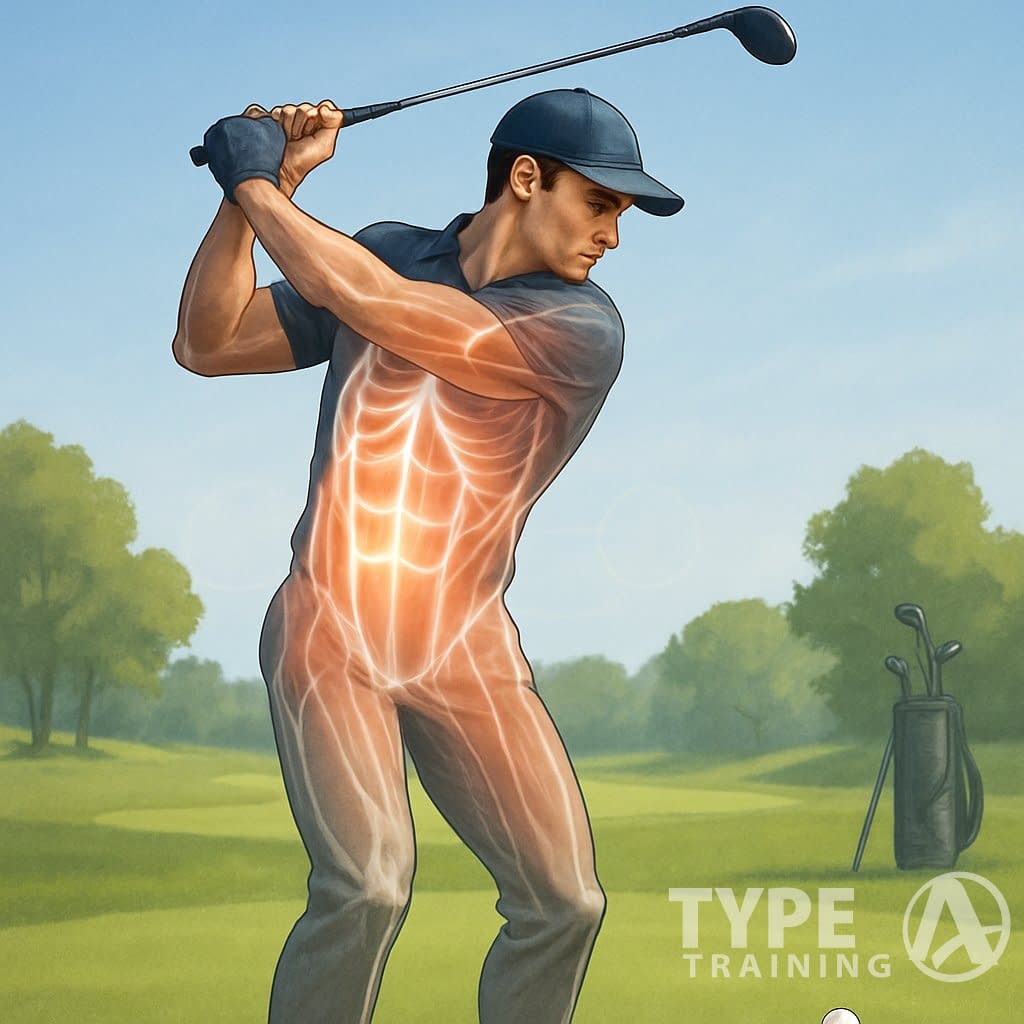
Popular posts:
Core exercises for golfers should target more than just your abs. Your core includes muscles in your abdomen, lower back, hips, and glutes that all work together during the golf swing.
Core exercises for golfers not only improve stability but also enhance your overall sport efficiency.
The right exercises help you develop rotational power while keeping you stable. That’s exactly what you need for consistent ball striking.
Many golfers focus on buying new equipment when they could see better results by spending just 15-20 minutes on core strengthening exercises a few times per week. This small investment in your physical conditioning can lead to noticeable improvements in your swing mechanics and boost your performance on the course.
By committing to core exercises for golfers, you can fundamentally change your game.
Key Takeaways
- A strong core creates better swing stability, increases power, and helps prevent common golf injuries.
- Effective golf core training should include both rotational and anti-rotational exercises that mimic the golf swing motion.
- Consistent core workouts of just 15-20 minutes, 2-3 times weekly can significantly improve your golf performance.
Why Core Strength Matters for Golfers
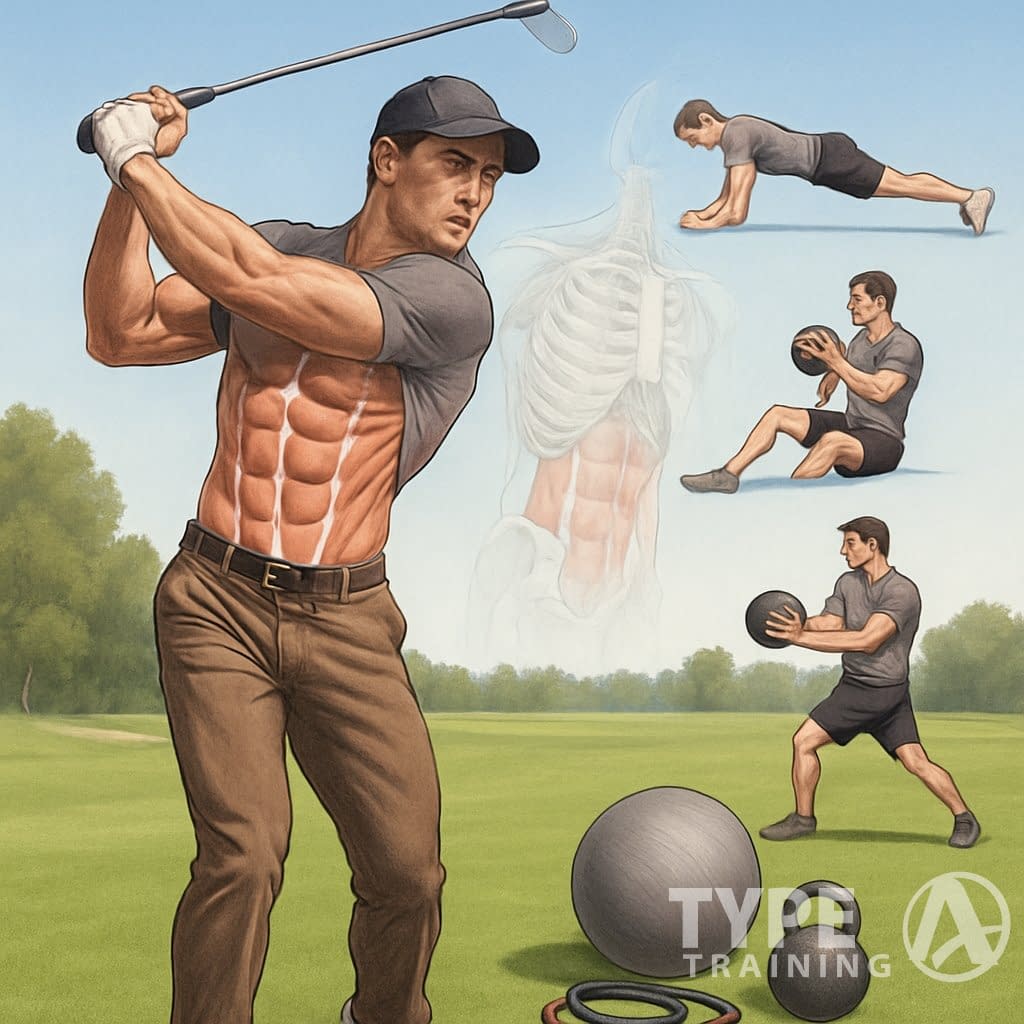
A strong core is the foundation of an effective golf swing. It powers your movements, keeps you stable, and protects your body from the game’s stresses.
Understanding the role of core exercises for golfers will help you create a targeted training plan.
The Role of Core Muscles in the Golf Swing
Your core muscles do much more than help you look good at the beach—they’re central to your golf performance. The core includes not just your abs, but also your lower back, obliques, and hip muscles.
For the best results, prioritize core exercises for golfers that engage multiple muscle groups.
These muscles work together to create the rotational force needed in your swing. During a golf swing, your core initiates the movement, controls the rotation, and stabilizes your spine.
When you coil during your backswing, your core muscles store potential energy. As you begin your downswing, these muscles release this energy in a controlled way.
A strong and stable core acts as the connection between your upper and lower body. This connection ensures your legs’ power transfers efficiently through your torso to your arms and club.
Without proper core engagement, your swing becomes disconnected and inefficient. Your arms and shoulders try to do too much, leading to inconsistent shots and possible injury.
Impact on Swing Power, Accuracy, and Consistency
Core strength directly influences your swing speed and distance. When your core muscles fire well, they boost rotational efficiency, transferring more energy to the ball.
Your accuracy improves with core stability. A stable core keeps your swing on plane and stops those extra movements that cause mishits.
You’ll probably notice fewer slices and hooks as your core keeps your body aligned throughout the swing.
Benefits of Core Strength for Golf Performance:
Integrating core exercises for golfers into your weekly workout will provide significant benefits.
- Increased clubhead speed
- Improved shot accuracy
- More consistent ball striking
- Better balance throughout the swing
- Enhanced ability to handle uneven lies
Consistency comes from repeatable mechanics. Your core lets you repeat the same swing motion, even as fatigue sets in during a long round or practice.
Link Between Core Stability and Injury Prevention
Golf may not seem physically demanding, but it puts a surprising amount of stress on your body. The rotational forces in a golf swing can strain your spine and surrounding muscles if you don’t support them properly.
Core strength is crucial for injury prevention in golf. Your core muscles protect your spine during the powerful rotational movements of your swing.
They absorb forces that would otherwise stress your lower back. Many common golf injuries—lower back pain, hip issues, and even shoulder problems—can be traced back to core weakness.
When your core can’t stabilize, other parts of your body try to make up for it, leading to overuse injuries. A strong core also improves your posture both on and off the course.
Regularly performing core exercises for golfers can help mitigate common injuries.
Better posture means less strain on your back during those four-plus hours of a typical round. The Mayo Clinic confirms that strong core muscles make many activities easier, including swinging a golf club.
Core Muscle Anatomy and Function in Golf
Investing time in core exercises for golfers is an investment in your long-term health.
Understanding your core’s anatomy and how it works during your golf swing is essential for both performance and injury prevention. Your core serves as the power center for transferring energy from your lower body to your upper body as you swing.
Key Muscles: Abdominals, Obliques, and Lower Back
Your core consists of several interconnected muscle groups that work together during your golf swing. The rectus abdominis (your “six-pack” muscles) runs vertically down the front of your abdomen and helps with forward flexion and posture.
The obliques (both internal and external) wrap around your sides and are crucial for rotational movements. These muscles generate rotational power during your swing and help control your body’s rotation from backswing through downswing.
Your transverse abdominis acts like a natural weight belt, providing stability and pressure throughout your core. This deep muscle is critical for maintaining good posture and preventing lower back pain during your golf swing.
These muscles form a protective cylinder around your spine. They create the stable base you need for a consistent, powerful golf swing.
Role of Glutes and Erector Spinae
The glutes (gluteus maximus, medius, and minimus) serve as powerful hip extensors and are vital for generating the initial power in your golf swing. Strong glutes help you stay stable during your backswing and provide the force needed to start your downswing.
Your erector spinae is a group of muscles that run along your spine. These muscles are crucial for golf performance as they help you keep good posture and prevent your lower back from rounding.
Together, your glutes and erector spinae create what golf instructors call “trunk stability.” This stability lets you keep the right spine angle during your swing, which is key for consistent ball striking.
Weakness in these areas often leads to poor swing mechanics and an increased risk of lower back injuries. It’s a common problem for golfers, no matter their skill level.
Torso Rotation and Anti-Rotation Mechanics
Focus on incorporating core exercises for golfers to enhance your overall athleticism.
Proper torso rotation is fundamental to an effective golf swing. Your core muscles have to work together in sequence to create and control rotational force.
During your backswing, your obliques and other core muscles stretch, storing potential energy. In the downswing, this energy releases as your core muscles contract, generating the rotational power you need for distance.
The seated partner med ball Russian twist is a great exercise that challenges this movement pattern. Anti-rotation exercises matter just as much.
These exercises train your core to resist unwanted rotation, which helps you stay stable during your swing. Moves like planks with reaches or Pallof presses teach your core to stay firm against rotational forces.
Your core needs to be ready for both movement (rotation) and stability (anti-rotation). Training both leads to better swing mechanics, more club head speed, and less risk of injury.
Foundational Core Exercises for Golfers
These fundamental core exercises form the backbone of any golfer’s fitness routine. They target the muscle groups that power your rotation, help your posture, and protect your spine during the golf swing.
Planks and Variations
The weighted front plank is one of the best exercises for building core strength for golf. It trains your whole trunk to stabilize, which is crucial during your swing.
Start in a push-up position with your weight on your forearms and your body straight from head to heels. Pull your navel toward your spine to engage your core.
Hold this position for 30-60 seconds and breathe normally. Beginners can start with 20-second holds and work up.
Strengthening your core through effective core exercises for golfers will yield great dividends.
If you want to make it harder, try:
-
- Plank with arm lift: Extend one arm forward while holding position
Developing a routine around core exercises for golfers is essential for serious players.
- Plank with leg lift: Raise one leg, keeping hips level
- Moving plank: Shift from forearm plank to high plank position
Try for 3 sets of planks in your workout, resting 30-45 seconds between sets.
Side Planks for Lateral Stability
Side planks build lateral core strength, which is essential for keeping good posture throughout your golf swing. This exercise targets your obliques, which power your rotational movements.
Lie on your side with your elbow directly beneath your shoulder. Stack your feet or stagger them for balance.
Lift your hips to form a straight line from ankles to shoulders. Your free hand can rest on your hip or reach up.
Hold for 20-30 seconds on each side. To make it tougher:
- Add a hip dip by lowering and raising your hip
- Extend your top leg upward
- Add rotation by reaching your top arm under your body
Side planks really help prevent the common golf swing flaw of excessive lateral movement. Strong obliques help you maintain rotational power while keeping your spine aligned.
Bird Dog for Core Activation
The bird dog exercise boosts your core stability while improving balance and coordination—key skills for a more controlled golf swing.
Start on all fours with your hands under shoulders and knees under hips. Keep your back flat and core tight.
Extend your right arm forward and your left leg backward until both are parallel to the floor. Hold for 2-3 seconds, then return to the starting position.
Switch sides and repeat. Do 8-12 reps per side.
Keep your hips level—don’t let them rotate. Maintain a neutral spine and move slowly, focusing on control.
This exercise teaches your body to stabilize your trunk while your limbs move—just like during your golf swing. The bird dog especially targets your deep core muscles that protect your spine during rotation.
Glute Bridge for Lower Back and Glute Strength
Strong glutes and a stable lower back are the base of a powerful golf swing. The glute bridge targets both, while being gentle on your spine.
Lie on your back with knees bent and feet flat on the floor. Place your arms at your sides, palms down.
Push through your heels to lift your hips up until your body forms a straight line from shoulders to knees. Squeeze your glutes at the top.
Hold for 2 seconds, then lower with control. Try 12-15 reps for 3 sets.
To up the challenge:
-
- Single-leg bridge: Extend one leg while bridging
- Weighted bridge: Place a weight across your hips
- Bridge with leg extension: Extend one leg at the top position
Try various core exercises for golfers to keep your workouts engaging and effective.
This move activates your posterior chain—the muscles running along your back. A strong posterior chain helps you keep proper posture throughout your swing and gives you the stability needed for consistent ball striking.
Rotational and Anti-Rotation Core Exercises
Rotational and anti-rotational exercises form the backbone of a golfer’s core training regimen. These movements specifically target the muscles used during your golf swing while also building stability to prevent injuries.
Russian Twists for Rotational Power
Russian twists can really boost your rotational power, which you need for generating club head speed.
To do this exercise:
- Sit on the floor with your knees bent and feet just off the ground.
- Lean back until your torso and thighs form a V-shape.
- Hold a weight, medicine ball, or even a golf club across your chest.
- Rotate your torso from side to side, touching the weight to the floor beside you.
Focus on controlled movement, not speed. Try 2-3 sets of 10-12 rotations per side.
Rotate from your core, not your arms. Keep your spine long and your chest up—don’t let your posture collapse.
As you get stronger, bump up the weight or lift your feet higher for more challenge.
Pallof Press for Anti-Rotation Strength
The Pallof press helps your core resist rotation, which keeps your spine steady during your swing.
Utilizing core exercises for golfers will develop a strong foundation for your game.
This anti-rotational exercise is a must for swing consistency.
How to set up:
- Attach a resistance band to a fixed point at chest height.
- Stand sideways to the anchor, holding the band at your chest.
- Press the band straight out in front, fighting the pull.
- Hold for 2-3 seconds, then bring it back in.
Start with 3 sets of 8-10 reps on each side. The real challenge is resisting the twist, not just pressing out.
As you get comfortable, try holding the press out longer or kneeling to make it tougher.
Dead Bugs for Controlled Movement
Dead bugs teach your core to stay steady while your limbs move—pretty much what you need to keep posture during your swing.
How to do it:
- Lie on your back, arms reaching for the ceiling.
- Bring your legs up, knees bent at 90 degrees.
- Slowly lower your right arm overhead while you extend your left leg.
- Return to the start and switch sides.
Keep your lower back pressed firmly into the floor the whole time. That’s how you know your core’s working.
Start with 2-3 sets of 8-10 reps per side. Don’t rush—quality matters more than quantity.
Accessory Core Exercises to Enhance Golf Performance
Adding diversity to your core exercises for golfers will help maintain your interest in training.
Besides the basics, there are some exercises that help golfers build the kind of strength you just can’t get from standard core work.
These moves dig deeper, hitting muscles that regular routines might skip.
Weighted Front Plank for Advanced Core Stability
The weighted front plank takes the classic plank up a notch by adding a little extra resistance.
To try it:
Each session focused on core exercises for golfers should be tailored to your unique needs.
- Start in a standard plank on your forearms.
- Have a partner gently set a 5-10 pound plate on your mid-back.
- Hold for 20-30 seconds, staying solid.
- Add weight as your core gets stronger.
This one really targets the deep muscles like your transverse abdominis. They’re the ones that keep your torso steady when you swing.
Go for 3 sets, resting 45-60 seconds between. Two or three times a week is plenty.
Bicycle Crunches for Functional Flexibility
Bicycle crunches are great for rotational strength and flexibility.
They hit your obliques—those side muscles that help power your downswing.
Here’s how:
-
- Lie on your back with your hands behind your head.
- Lift your shoulders and bring your right elbow toward your left knee, extending your right leg.
Incorporating core exercises for golfers enhances not just performance but also overall fitness.
- Switch sides in a pedaling motion, aiming for 12-15 reps per side.
Try to move with control, not speed. That’s how you get the most out of it.
Do this twice a week. Stronger obliques can mean more torque and maybe even longer drives (not to mention less back strain).
Superman to Support Lower Back Health
The Superman exercise is all about your lower back and spinal stability.
That’s huge for preventing golf injuries and keeping your posture in check.
Here’s what to do:
- Lie face down, arms stretched out overhead.
- Lift your arms, chest, and legs off the ground all at once.
- Hold for 2-3 seconds.
- Lower down slowly, repeat for 10-12 reps.
This targets the erector spinae along your spine—muscles that don’t get enough love in most workouts.
Do Supermans 2-3 times a week. Stronger back muscles help you keep your spine angle, which means more consistent swings and less soreness after a round.
Designing an Effective Core Training Routine for Golfers
The synergy gained through core exercises for golfers can transform your swing.
A solid core routine mixes targeted exercises with the right frequency and progression. That’s how you get the most out of your golf game.
Your plan should hit different aspects of core fitness, but still fit with your overall training.
Balancing Strength, Endurance, and Flexibility
You need all three—strength, endurance, and flexibility—for a truly golf-ready core.
Start with strength moves like weighted planks and medicine ball rotations. These help you build power for more distance.
Always remember that core exercises for golfers should be a staple in your training regimen.
For endurance, add longer plank holds and higher-rep Russian twists. That stamina keeps your form tight for all 18 holes.
Don’t skip flexibility work. Standing rotations and cat-cow stretches help your core rotate freely, which is huge for a smooth swing and injury prevention.
Try to hit each category every workout. Variety’s good for you anyway.
Frequency and Progression Guidelines
Consistency really matters here.
Aim for 2-3 core sessions a week, spaced out so you can recover. Each one should last 15-20 minutes—enough to make a difference, but not so much that you get burned out.
The journey to improved performance starts with core exercises for golfers.
Start simple, then ramp things up. Here’s a quick guide:
Don’t underestimate the impact of core exercises for golfers on your performance.
| Training Aspect | Starting Point | Progression Method |
|---|---|---|
| Strength | 3 sets of 8-10 reps | Add weight/resistance |
| Endurance | 30-second holds | Add 5-10 seconds a week |
| Flexibility | Basic rotation | Gradually increase range |
Adjust your routine if you’re playing in a tournament—maybe back off the volume to stay fresh.
Sample Weekly Core Workout Plan
Monday: Strength Focus
Incorporating core exercises for golfers consistently will yield better results over time.
- Weighted planks – 3 x 30 seconds
- Medicine ball rotational throws – 3 x 8 each side
- Side planks with rotation – 2 x 10 each side
Wednesday: Endurance Focus
- Plank circuit (front, sides, reverse) – 45 seconds each
- Dead bugs – 3 x 12 each side
- Bicycle crunches – 3 x 20 total
Friday: Flexibility and Rotation
- Standing rotations with club – 2 x 15 each way
- Half-kneeling medicine ball rotations – 3 x 10 each side
- Cat-cow stretches – 10 slow reps
Warm up for 3-5 minutes before you start. Rest 30-60 seconds between sets.
Core exercises for golfers are crucial for developing a powerful and consistent swing.
Tweak the plan if you need to—listen to your body.
Integrating Core Training Into Your Golf Practice
Adding core work to your routine doesn’t have to be a hassle. You can fit it in without messing up your regular practice.
Your practice sessions can greatly benefit from core exercises for golfers.
Practical Tips for On and Off the Course
Try slipping in 10-15 minutes of core exercises before you play. Planks and dead bugs are great for waking up your midsection before that first drive.
For more structure, do 2-3 focused core sessions each week. If possible, schedule them on non-golf days so you’re not tired on the course.
Here’s a simple routine:
Integrating core exercises for golfers into your routine will help you maintain focus and energy.
- Monday: Full core workout (15-20 min)
- Wednesday: Quick activation (10 min)
- Friday: Rotational focus (15 min)
Mix core work into your full-body resistance training for even better results. It’s more efficient, and you’ll feel the difference.
Regularly practicing core exercises for golfers will lead to noticeable improvements in your performance.
Keep tabs on your swing speed and stability—those are good signs your training is working. Adjust things as you go.
Incorporating Coaching and Feedback
Working with a golf fitness coach can really boost your core training. They’ll give you advice tailored to your swing mechanics and any physical limits you might have.
Video analysis is a great way to spot how core weakness affects your swing. Try recording your swing before you start a new core routine, then check again after a month or so—maybe 4-6 weeks. You’ll probably notice some changes.
Ask your golf instructor for core exercises that fit your unique swing issues. Honestly, a targeted workout just works better than a generic one.
You might want to try fitness tech, like pressure plates or swing analyzers. These gadgets give you real, measurable feedback on how your core strength enhances your golf performance.
It’s smart to Core Exercises for Golfers assessments with fitness pros every few months. That way, you can make sure your core training stays on track with your golf goals—and your health.
